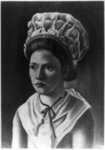Loose Lips
On the same day the War Council met (November 30), American spy, Major John Clark, Jr., operating in Philadelphia, got word to Washington that the British were "in readiness to march" with an end to a surprise attack on the Americans. These reports were corroborated by General Armstrong who wrote, "Every intelligence agrees that General Howe now, no doubt with his whole force, is immediately to take the field in quest of this army."
Washington's army spent the next three days on alert. But he was "disappointed that no attack had come." Washington knew the Americans were in a strong defense position and could give the British all they could handle.
He wasn't disappointed for long though.
On December 3rd, he again received word from his master spy, Major Clark, this time stating that "the enemy are in motion; [they] have a number of flat-bottomed boats and carriages and scantling, and are busy pressing horse and wagons. Clark's information was in essence correct, but came a day early.
That same day, Washington also received news that the British were on the move from an unlikely source: an middle-aged Quaker woman named Lydia Darragh. Darragh, whose house was being used by the British for meetings. She brought a message out of the city saying the Howe would be mounting a major attack on the 4th. Captain Allen McLane of the light horse independently reported a similar message to Washington.

This purported image of Lydia Darragh is in the collection of the Library of Congress
The creator, date and other details are unknown
The British, nearly 10,000 strong, began moving out at 10 P.M. on the evening of the 4th. General Howe was in part acting on information from his spies, who told him that the Americans were moving to a new camp. He hoped to catch the Americans out in the open.
As was Howe's custom he broke into his troops into two columns. The advance column led by Lord Cornwallis, headed up the Germantown Pike to Chestnut Hill, three miles from the American right. The main column, led by General Knyphausen, started out for the American left.
Two days of supplies, were loaded up and taken in reserve. This was to be a major British attack. Only a few regiments were left behind to guard Philadelphia.
At 3 a.m. on December 5th, alarm guns were fired in the American camp — the British were coming.



